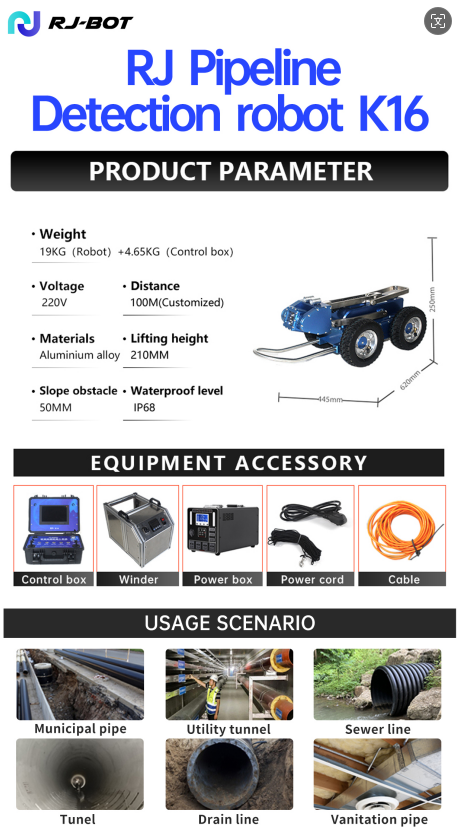We are already very familiar with the safety of roads where vehicles come and go every day. But do you know about "underground safety"?
Various underground pipelines are like the internal organs of the human body, requiring constant inspection and maintenance. Underground safety is as meticulous and progressive as ground safety.
How should such important underground safety be inspected? Are there any good helpers? Don't worry, when it comes to helpers, this "little guy" stands out - the CCTV pipeline inspection robot.
Don't be fooled by its small and exquisite appearance; its functions are significant. It consists of a laptop control box (synchronized with the remote control buttons), an automatic rewinding meter, an inspection robot (including a camera), and a matching portable power source.
The laptop control box (synchronized with the remote control buttons) monitors the interior of the pipeline in real-time, records videos, and assists in engineering to produce inspection reports. When monitoring the pipeline images, if damage or blockages are found in the pipeline, they can be recorded through video recording or photography for maintenance and repair. On the main controller's display interface, you can always understand the status of the crawler, including pitch, air pressure, distance, speed, platform height, date, and other related information.
The robot performs a full-length, long-distance video inspection inside the pipeline, detecting and recording the conditions of wall corrosion, damage, misalignment, sedimentation, and scaling. It observes and saves video materials in real-time and transmits the videos to the computer.
Later, professional inspection engineers will interpret all the image materials. Using professional knowledge and software, they analyze and evaluate the current state of the pipeline, effectively identifying the exact locations of wall corrosion, damage, misalignment, sedimentation, and scaling. They comprehensively understand the current state of the pipeline, compile a report on the pipeline's status, and evaluate the operational quality and function of the drainage pipeline. This provides an economical and effective inspection method for targeted pipeline repair, acceptance of newly laid pipelines, pre-repair scheme design, construction monitoring during the repair process, and post-repair re-inspection.
